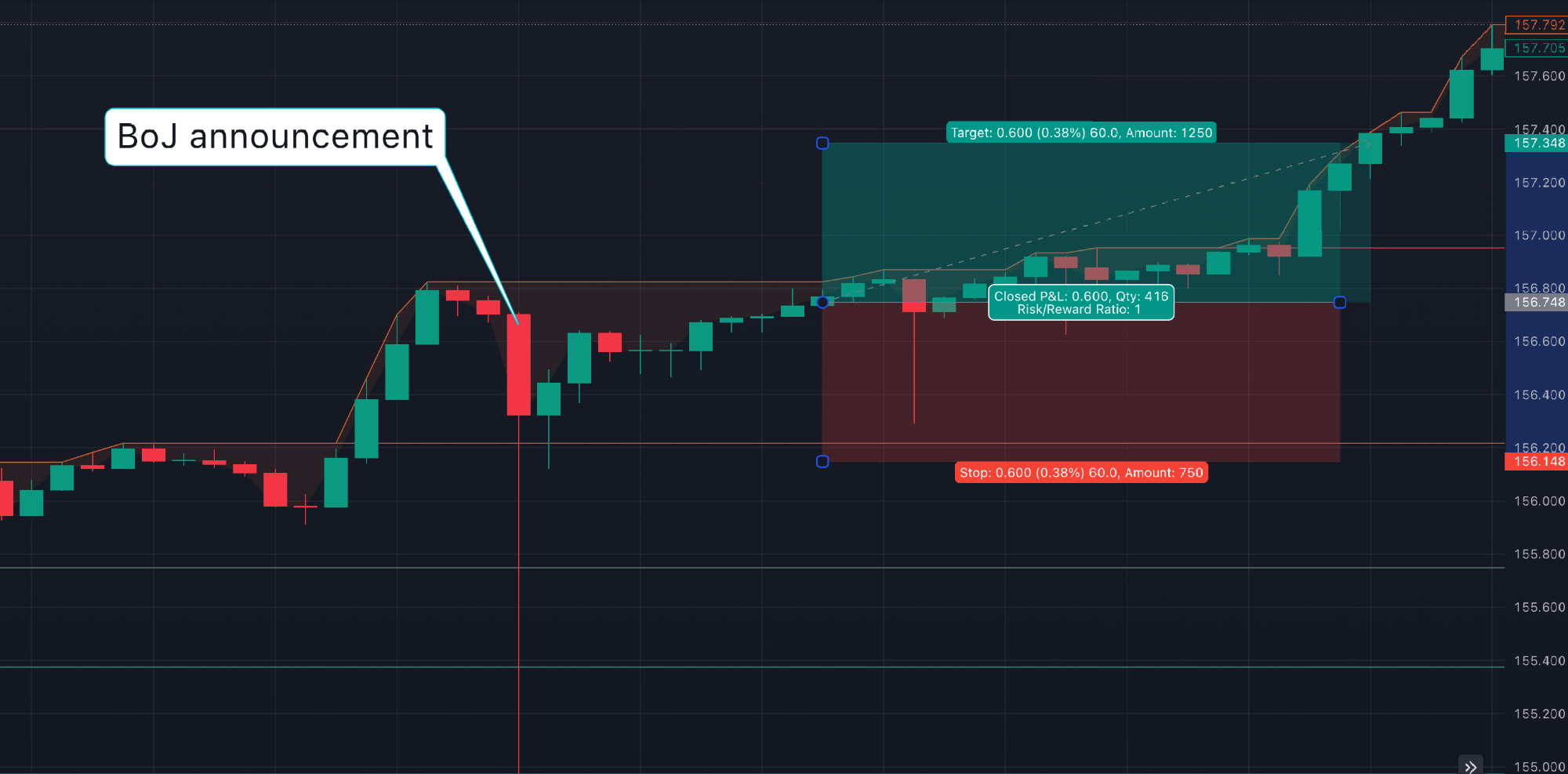Forex Trading in Qatar



Forex trading is gaining serious traction in Qatar. This surge can be linked to a few key factors: Qatar’s robust economy, a growing financial awareness amongst its citizens, and the potential for high returns that the forex market offers.
This guide will equip you with the essentials of forex trading in Qatar. We’ll break down core concepts, provide actionable tips, and walk you through an example trade to solidify your understanding.
Quick Introduction
- The Qatari riyal (QAR) is pegged to the US dollar (USD) at a fixed rate of QAR 3.64 to USD 1.00, with an economy that is heavily reliant on oil and gas and consistently low inflation contributing to the stability of the QAR.
- Although Qatar boasts a robust regulatory landscape with authorities like the Qatar Financial Centre Regulatory Authority, the Qatar Financial Markets Authority, and the Qatar Central Bank, retail forex traders face a lighter regulatory touch.
- Qatar operates in Arabian Standard Time (AST). Forex markets are open 24 hours a day, but it’s key to know when major trading sessions overlap. For Qatari traders, the London and New York sessions are most relevant.
Top 4 Forex Brokers in Qatar
Our latest tests point to these 4 trading platforms as the best for forex traders in Qatar:
See all Forex Brokers in Qatar
How Does Forex Trading Work In Qatar?
To profit from price fluctuations, forex trading in Qatar involves buying and selling currency pairs in the foreign exchange market, such as USD/JPY (US dollar/Japanese yen) or regional currencies like USD/TRY (US dollar/Turkish lira) and USD/AED (US dollar/Emirati dirhams).
To start trading currencies online in Qatar, you’ll need to:
- Open an account with a forex trading platform in Qatar – we recommend choosing an ASIC-, or FCA-regulated firm, with a growing number supporting websites and support in Arabic, alongside halal accounts.
- Deposit funds – consider selecting a QAR account, if available, to minimize conversion fees.
- Execute trades – your broker will provide a desktop app, mobile app, or web-based platform (or all three).
Is Forex Trading Legal In Qatar?
Qatar’s forex trading scene is flourishing, with many traders opting for international brokerage firms due to the legal framework permitting such activity.
However, it’s important to note that the Qatari riyal (QAR) isn’t directly tradable on the forex market. Since 1980, it has been pegged to the US dollar.
Pegged currencies offer limited price movement, mirroring the pegged currency. As a result, Qatari forex traders often turn to other options, with the Japanese yen (JPY) being a popular choice due to its status as a major Asian currency.
Reputable brokers can facilitate the exchange of Qatari riyals for these major currencies. Qatar also caters to Muslim investors seeking Sharia-compliant financial instruments, with Islamic forex trading legal and available.
Is Forex Trading Taxed In Qatar?
Forex trading in Qatar offers a potential tax advantage for individual traders. Unlike many countries, Qatar does not levy personal income tax so that residents can keep their net profits from forex trading tax-free.
Taxes for businesses and corporations are different. Qatari-owned companies typically face a corporate tax rate of 10% on their net profits. Foreign-owned companies may have varying tax requirements depending on their specific circumstances.
While Qatar currently enjoys a zero-rate value-added tax (VAT), the country plans to implement VAT in the future as part of the Gulf Cooperation Council (GCC) agreement.
Forex trading activities must also comply with regulations established by the Qatar Financial Centre Regulatory Authority (QFCRA) or other relevant regulatory bodies.
When Is The Best Time To Trade Forex In Qatar?
The forex market in Qatar, like almost everywhere, operates 24/5. This gives you the flexibility to trade currencies around the clock. However, activity isn’t uniform throughout the day. Specific global sessions see a surge in trading, offering potentially more opportunities.
The Qatar Exchange (QE) maintains distinct hours, from 10:00 to 15:30 local time, Sunday through Thursday. While these hours won’t directly impact forex trading, they might be relevant for trading-related financial instruments.
While peak activity periods provide a general roadmap, the best times to trade will ultimately depend on your style and chosen currency pairs.
A crucial step for Qatari forex traders is to examine their personal goals and risk tolerance. This self-assessment will help them determine the most suitable trading times to align with their strategy.
Example Trade
To give you a real-world example of day trading forex in Qatar, here’s how I executed a short-term trade on the USD/JPY currency pair:
Event Background
I focused on a significant announcement from the Bank of Japan (BoJ) regarding their monetary policy.
The BoJ adjusted its interest rates, setting a new policy rate range of between 0% and 0.1%, signalling a potential end to its prolonged period of ultra-loose monetary policy.
I anticipated this decision would impact the USD/JPY currency pair and expected the yen to jump against the dollar.
Interpretation Of Data
Following the BoJ announcement, I assessed the immediate market reaction on a 15-minute chart. Historically, a rise in interest rates tends to strengthen a currency as it attracts more foreign capital seeking higher returns.
For the USD/JPY pair, I analyzed the initial market movements to see if the yen was appreciating against the US dollar as traders reacted to the news.

Trade Entry
There was a sizeable 173-pip move, but not in the direction I expected, so I held off entering a trade because I thought my analysis was wrong. However, once I saw the price returning to the pre-announcement level, I entered the trade based on my analysis that the price would increase in the short term.
Using my forex trading platform, I executed the trade by entering a buy order at the current market price. I ensured that my stop-loss and take-profit levels were predefined to automate risk management.
I set a 1:1 risk-to-reward ratio (risking 60 pips to make 60 pips) and risked 2% of my account balance on this trade.
Trade Exit
With the trade live, I closely watched the price action, especially during the volatile period right after the announcement. Thankfully, the market moved in the direction I expected.
My take-profit order was triggered automatically, closing the trade with a profit. That was a good reminder to set take-profit levels in advance.
Of course, the market can be unpredictable. If things had gone the other way, my stop-loss order would have been there to limit my potential losses. It’s always better to be safe than sorry.
Post-Trade Analysis
Once the trade closed, it was time for the actual learning to begin. I dug into a post-trade analysis to sharpen my skills for the next opportunity.
First, I reviewed the accuracy of my initial hunch. Did the JPY react as I expected based on the BOJ announcement and historical data? This helped gauge my analysis skills.
Next, I scrutinized my risk management. Did I stick to my stop-loss and take-profit levels? This is where discipline comes in; thankfully, it paid off this time.
Finally, I assessed the efficiency of my execution. Could I have gotten a better entry or exit price with different order types or timing? There’s always room for improvement.
Since the trade landed in profit, I identified what worked well. Replicating those elements in future trades could increase my success rate. But even if the trade had gone south, the analysis would have been crucial.
Bottom Line
Forex trading is gaining traction in Qatar, which is fueled by a strong economy and growing financial awareness.
The QAR is pegged to the USD at a fixed rate, limiting opportunities for traders looking to speculate on the Riyal’s value. However, residents can still trade popular currency pairs like EUR/USD or USD/JPY through Qatar’s top forex brokers.
Interestingly, Qatari regulations are relatively relaxed compared to other financial sectors, offering a more accessible entry point for aspiring forex traders.
Recommended Reading
Article Sources
- Monetary policy in Qatar, 1940s-2002 - BIS
- Qatar Financial Centre Regulatory Authority (QFCRA)
- Qatar Central Bank
- Qatar Financial Markets Authority (QFMA)
The writing and editorial team at DayTrading.com use credible sources to support their work. These include government agencies, white papers, research institutes, and engagement with industry professionals. Content is written free from bias and is fact-checked where appropriate. Learn more about why you can trust DayTrading.com



